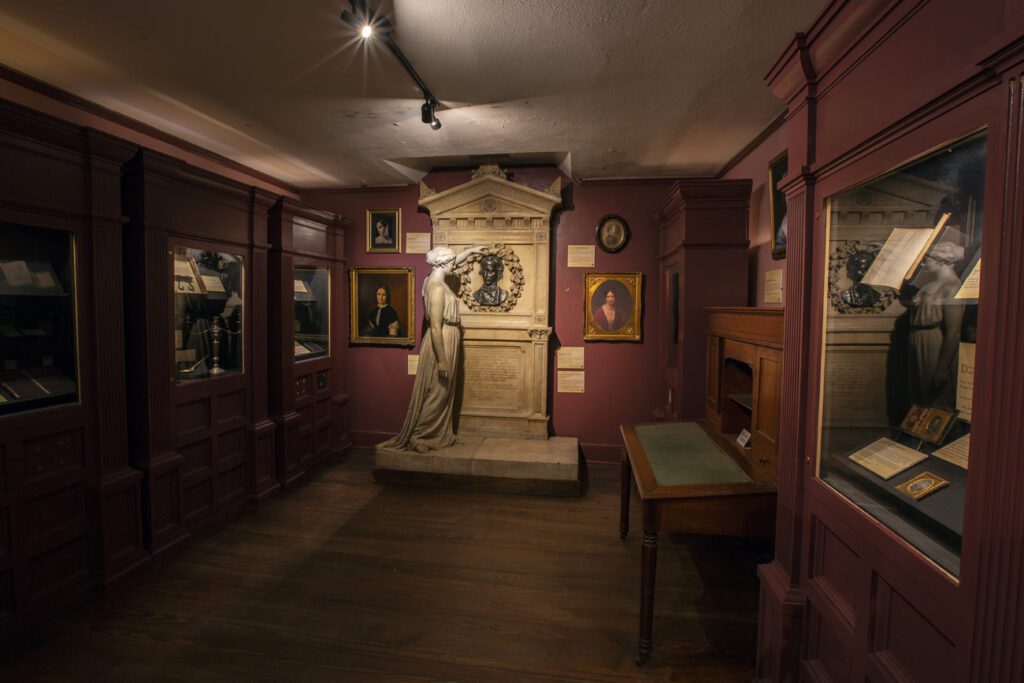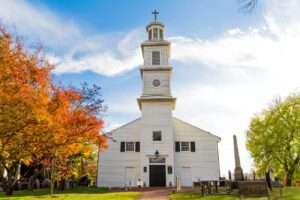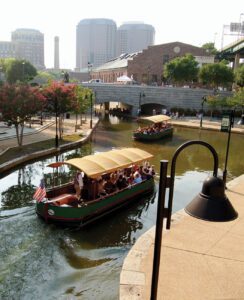Literary history and outdoor adventures abound in the Virginia capital.

Long before Stephen King and Dean Koontz produced fictional goosebumps, Edgar Allan Poe was creating the genre. In this season of goblins and ghouls, his chilling stories are standards, packed with ominous ravens, blood-thirsty orangutans and maniacal killers bricking people up in wine cellars.
For a Halloween adventure, what better place to visit than what bills itself as the world’s most extensive collection of Poe memorabilia in Richmond, Virginia?

Poe’s life story is linked to a number of cities: He was born in Boston, buried in Baltimore and lived in New York and Philadelphia. But Richmond was his childhood home and where fans and scholars have amassed a vast array of artifacts, documents, books and personal belongings in The Poe Museum.
Poe was 2 when his actress mother died in Richmond, and he was adopted by the Allan family. Though the physical place where he was raised no longer stands, an assemblage of adjoining structures was connected in the late 1930s to form the museum. The spaces are anchored by a tiny, two-story stone house, believed to be the oldest in Richmond, that contains Poe’s childhood bed and original writings. Another building contains an extensive library of his stories and poems, including first and rare editions; a third building exhibits more personal items—a lock of hair, a walking stick, a steamer trunk.
The structures surround a memorial garden built in 1922. Along with flowerbeds and a bust of Poe, its chief attraction is the museum’s two feline residents, Edgar and Pluto, two ebony cats who roam the grounds greeting visitors.

Virginia Tourism Corporation, www.Virginia.org
While it’s easy to while away several hours poring over the Poe collection, other adventures await within walking distance. The museum is part of the city’s Shockoe district, one of Richmond’s oldest neighborhoods and known for its boutiques, art galleries and restaurants. A 12-minute stroll from The Poe Museum ends at St. John’s Episcopal, built in 1741 and now famous for two attractions: the grave of Poe’s mother, Eliza, and the site where orator Patrick Henry delivered his famous “liberty or death” speech in 1775. A reenactment of that rousing oration is staged during the summer.
Shockoe also features the restored Riverfront Canal Walk, where paved paths wind along the water that used to bring supplies in and ship local goods out. Today, it’s popular with walkers, joggers, bikers and sightseers, as well as diners who grab an umbrella-shaded table at one of the adjacent cafes.

Overlooking the district from a high bluff is the Virginia statehouse, designed in the 1780s by native son Thomas Jefferson who drew inspiration from Roman and Greek temples. Today, its location atop Shockoe Hill is surrounded by more modern edifices, including the 1894 Victorian-style city hall and the more contemporary structures of the Virginia Commonwealth University.
The area is home to a variety of historic accommodations, from the boutique Quirk Hotel outfitted with works by local artists to The Jefferson, an opulent 1895 hotel that has hosted 13 presidents and a lengthy list of celebrities.
For those not up to walking the district, an historic trolley takes tourists to the most notable destinations. As the former capital of the Confederacy, many of those historical highlights are connected to the country’s troubled past and are difficult to escape. But beyond those controversial elements, Richmond remains an intriguing getaway for those who want to explore the outdoors in the heart of a city—and who need a few goosebumps to make it interesting.
visitrichmondva.com
@visitrichmondva
Atlanta-based writer and editor contributing to a number of local and state-wide publications. Instructor in Georgia State’s Communication department and Emory’s Continuing Education division.











